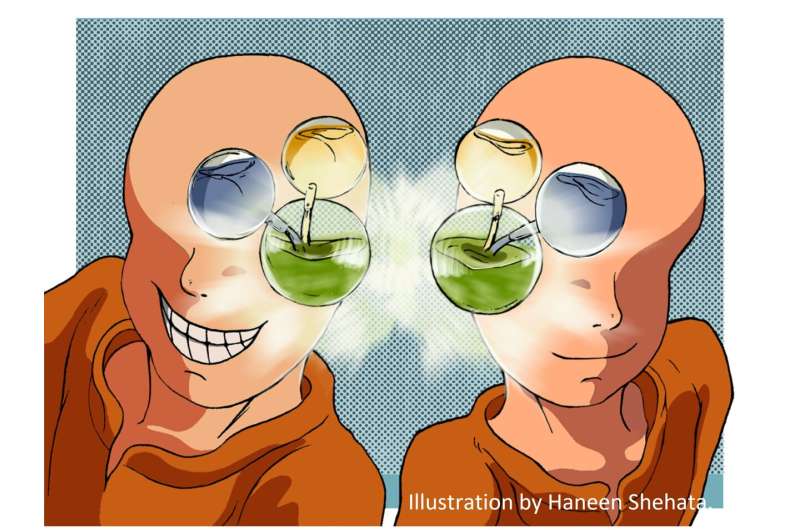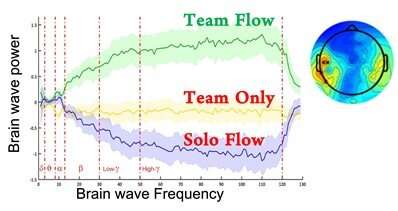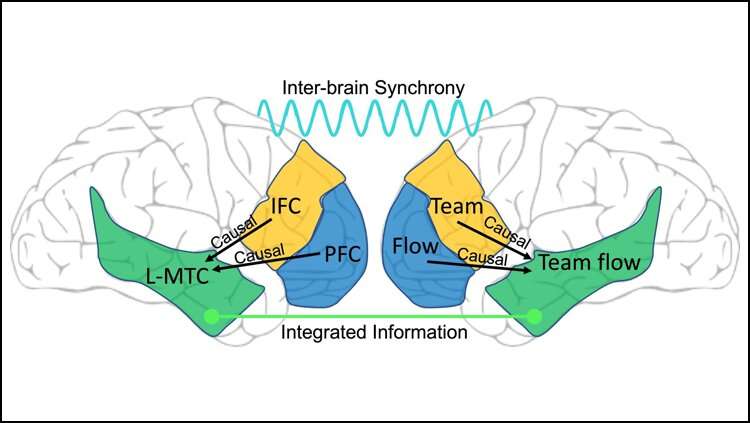
A research team led by associate professor, Mohammad Shehata at Toyohashi University of Technology, in cooperation with researchers at the California Institute of Technology and Tohoku University have found the brain waves and regions sensitive to team flow compared to non-engaging teamwork or a solo flow. This study is the world’s first attempt to study this psychological state objectively. These neural correlates not only can be used to understand and predict the team flow experience. The authors are working on utilizing the findings to monitor and predict team performance.
Team flow is experienced when team players get “in the zone” to accomplish a task together. Great teams experience this psychological phenomenon, from sports to music bands and even professional work teams. When teamwork reaches the team flow level, the team performs in harmony, often breaking their performance limits.
It is desirable to reproduce this state in the lab and objectively measure it to investigate neural processing of team flow state, which has been an enormous hurdle for decades.
Researchers at the Electronics-Inspired Interdisciplinary Research Institute (EIIRIS) at Toyohashi University of Technology and California Institute of Technology found lab techniques that provide the first neuroscience evidence of team flow. The researchers measured the brain activity from 10 teams using EEG of teams of two while they played a music video game together. In some trials, a partition separated the teammates so they couldn’t see each other while they played, allowing a solo flow state but preventing team flow.
The research team scrambled the music in other trials, which prevented a flow state but still allowed teamwork. The participants answered questions after each game to assess their level of flow. Moreover, the researchers invented an objective neural method to evaluate the depth of the team flow experience. Then, the researchers compared the brain activity of the participants during each condition. They found a unique signature of team flow: increased beta and gamma brain waves in the middle temporal cortex, a type of brain activity linked to information processing. Teammates also had more synchronized brain activity during the team flow state compared to the regular teamwork state.

This study will provide a framework based on neural models that can be utilized toward more effective team-building strategies in areas where human performance and pleasure matters—business, sports, music, performing arts, video games, and entertainment. In partnership with governmental and industrial institutions, the researchers plan to use the neural signature of team flow to monitor and enhance team performance and, perhaps, build more effective teams.

Source: Read Full Article
